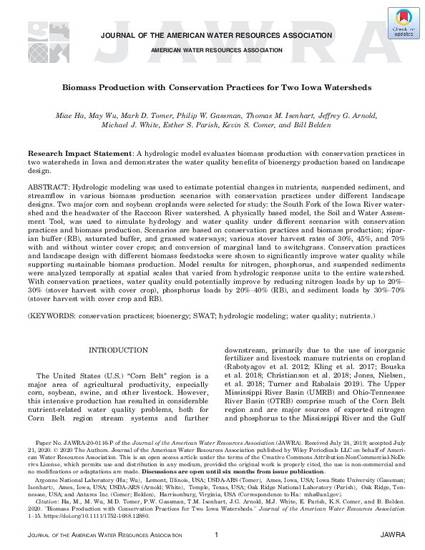
Hydrologic modeling was used to estimate potential changes in nutrients, suspended sediment, and streamflow in various biomass production scenarios with conservation practices under different landscape designs. Two major corn and soybean croplands were selected for study: the South Fork of the Iowa River watershed and the headwater of the Raccoon River watershed. A physically based model, the Soil and Water Assessment Tool, was used to simulate hydrology and water quality under different scenarios with conservation practices and biomass production. Scenarios are based on conservation practices and biomass production; riparian buffer (RB), saturated buffer, and grassed waterways; various stover harvest rates of 30%, 45%, and 70% with and without winter cover crops; and conversion of marginal land to switchgrass. Conservation practices and landscape design with different biomass feedstocks were shown to significantly improve water quality while supporting sustainable biomass production. Model results for nitrogen, phosphorus, and suspended sediments were analyzed temporally at spatial scales that varied from hydrologic response units to the entire watershed. With conservation practices, water quality could potentially improve by reducing nitrogen loads by up to 20%–30% (stover harvest with cover crop), phosphorus loads by 20%–40% (RB), and sediment loads by 30%–70% (stover harvest with cover crop and RB).
Available at: http://works.bepress.com/thomas_isenhart/68/

This article is published as Ha, M., Wu, M., Tomer, M.D., Gassman, P.W., Isenhart, T.M., Arnold, J.G., White, M.J., Parish, E., Comer, K.S., and Belden, B.. 2020. " Biomass Production with Conservation Practices for Two Iowa Watersheds." Journal of the American Water Resources Association. doi: 10.1111/1752-1688.12880.